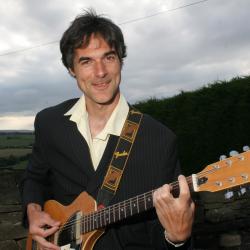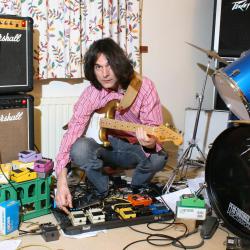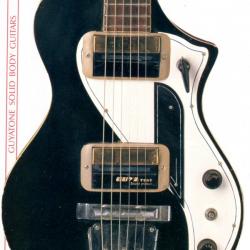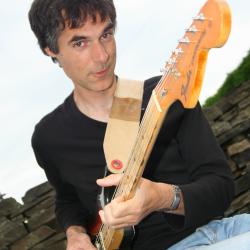 I will be teaching a new Ukulele course at the premises of Music Nation in Farsley Leeds. You can read more about this course here:
I will be teaching a new Ukulele course at the premises of Music Nation in Farsley Leeds. You can read more about this course here:
https://www.facebook.com/MusicNationLeeds
Jimi Hendrix Pedal Set-Up Explained
 There are these moments when you try a well-known guitar player’s gear set-up and you actually feel you are on stage jamming with the actual band.
There are these moments when you try a well-known guitar player’s gear set-up and you actually feel you are on stage jamming with the actual band.
For this article a short brief on Hendrix’s pedal set-up. His set-up is not complex and it is not too hard to make those pedals work for you to get that Hendrix sound. The one thing you now need to do is to play like Hendrix……………………..
Well even if you just riff about you will still get the vibe.
The pedals are run in the following order: Gtr–> Wah–> Octaver–> Fuzz–> UniVibe.
Hendrix used mainly Strats with Single Coil pick ups but the set-up works amazingly well with other guitars as well.
The Wah can be used for clean sounds, or while the Fuzz is on. Once you will kick in the Fuzz your Wah will start to sound very organic.
The Octaver does add depth to anything your will play, you can use it as a special effect or to add depth to the Fuzz.
Fuzz will add some frenzy to your chords and single notes.
The UniVibe adds swirl and space to the overall sound.
What Kind of Brands?
Wah: Use any kind of older style Dunlop Wah such as a Cry Baby. These pedals may not be perfect but they will get you close to Hendrix’s feel and sound. Any Wah will work, just experiment with your favourite ones.
Octaver: Use any simple one including all the warps and fluctuations, remember Hendrix’s pedals were not perfect. You really want a simple Octaver nothing too modern or flash.
Fuzz: You can either use a dedicated Fuzz or any Distortion pedal with a maxed out gain setting. As with the Octaver, your Distortion should be simple and basic. Hendrix’s live sound could be quite ugly from time to time. Once you know how to play simple gear will quickly get you into the zone.
UniVibe: A UniVibe can give you similar sounds as a simple chorus pedal. UniVibe does have more options, but have a good listen to some Hendrix live recordings and decide for yourself if you need a dedicated UniVibe unit or if a Chorus will do as well. I have been using some older Electro Harmonix style chorus pedals and they can get very close. Hendrix did not go for traditional chorus sounds (dedicated chorus pedals came into being in the late 70s and early 80s) he mainly used the UniVibe as a Leslie kind of effect to move the sound around and to create the idea of space (dedicated delays were not yet being manufactured in the 60s!). Avoid digital chorus pedals as they will clean your sound up too much. You want your sound to be as organic as possible.
Playing and Use of Pedals:
Hendrix may have been one of the first guitar players who started to combine various effects. Most of the effects are used to create variety in the sound. The main playing comes from his riffs and chords and the kind of songs he played: Souped up heavy blues dressed up with riffs! Keep this in mind all the time.
Get good with the Fuzz and your chords and riffs. Be able to mute at will but do not be afraid to create sonic havoc as Hendrix so often did. Bands like Sonic Youth took this noise idea a lot further, started thinking about it and specialized in it. Hendrix did not, it was part of what he did, but he could also play beautiful, clean chord style of playing.
You do not have to play Hendrix’s songs, it may be an idea to get inspired by his sound, create something of your own and start playing with the Octaver and Chorus to add variety to your overall sound.
Have fun and hope to catch you soon again for more,
Eddie
Just Bought a New Ukulele? Join New Ukulele Group in Farsley, Leeds LS28
You may have a Ukulele sitting somewhere in your cupboard, or it may have been just bought for you as a birthday present. Now you have that Ukulele what do you actually do with it? How do you make it sound to entertain some of your friends? Do not worry, help is on the way: A new Ukulele group is about to start in Farsley. Lessons will be in a small group on a Thursday night. Next to getting introduced to playing the Ukulele it is also a change to meet new friends.
Hope to meet you soon,
Cheers, Eddie
If you like the video, why not subscribe to the channel? Thanks!!
Eddie
New Ukulele Course At Farsley Starting in June
 Happy to announce the fact that a new Ukulele course is to start at Farsley. This course will be held at the premises of Music Nation which is located at the Cape Industrial Estate, Coal Hill Lane in Farsley.
Happy to announce the fact that a new Ukulele course is to start at Farsley. This course will be held at the premises of Music Nation which is located at the Cape Industrial Estate, Coal Hill Lane in Farsley.
http://musicnationleeds.com
The course will run from early June until mid July.
No need to have any previous experience, anyone with an interest in learning to play the Ukulele is welcome.
Students will get introduced to different playing techniques such as strumming and picking.
The lessons will take place in a small group. Once students will get comfortable with the Ukulele they will be encouraged to play simple songs together. Check out further updates on this website or musicnationleeds.com
People who are interested in coming along can get in touch by calling me directly on 07796 808633 or leaving a message through the contact page or leave some feedback here.
Cheers,
Eddie
Learn to Play Solo Blues in the Style of John Lee Hooker
 For this article I will give you a handful of simple tips how you can get closer to the John Lee Hooker sound.
For this article I will give you a handful of simple tips how you can get closer to the John Lee Hooker sound.
The key is to set up a rhythym, keep this rhythm going with a bassline played with your thumb while the rest of your fingers play a partical chord (or riff) in between the bass line. Keep the bass line at first simple to keep your playing smooth. Once you are comfortable with holding the bass line you can experiment with getting its sound more complex and change its feel.
Use a simple Open E-shape chord to get started, to change the key you can use a Capo while playing the same idea.
This style of playing is a great way to introduce you to more acoustic style Blues players. Once you get the idea you will be able to transfer some of its features into your own style of playing.
Enjoy and hope to catch you soon again for more,
Eddie
Tube Screamers and Transitor Amps
 It is often said that Tubescreamers of any kind do not work that well with transitor amps. Tubescreamers can give valve amps a natural boost, depending on how you dial in your sound. Simlar results can be achieve when you use a transitor amp. Most Tubescreamers will give you midrange boost, but this sound may be just what you are after.
It is often said that Tubescreamers of any kind do not work that well with transitor amps. Tubescreamers can give valve amps a natural boost, depending on how you dial in your sound. Simlar results can be achieve when you use a transitor amp. Most Tubescreamers will give you midrange boost, but this sound may be just what you are after.
Does a tubescreamer sound very different through a valve amp? No, but a valve amp will sound better in general, maybe that is why some players think it is better to use a Tubescreamer through a valve amp instead of a transitoramp.
A Tubescreamer works its mojo on almost any amp whereas a pedal like the Boss BD-2 may not do that and may prefer certain amps.
Happy playing and hope to see you soon again,
Eddie
Use Small Practise Amp as Reference Point for Sound of Your Pedals
 Pedals do not alwways sound the same through different amps. A simple method to check how well a pedal works is to use your pedal through a small practise amp. Most practise amps do have a small speaker and are of low wattage rating. They can be very unforgiving in their sound. Good pedals (and guitars) will sound fine through almost anything.
Pedals do not alwways sound the same through different amps. A simple method to check how well a pedal works is to use your pedal through a small practise amp. Most practise amps do have a small speaker and are of low wattage rating. They can be very unforgiving in their sound. Good pedals (and guitars) will sound fine through almost anything.
When you want to check the sound of a particular pedal try it first through a small amp, listen to its sound and then play same pedal through a bigger amp. Go for the same sound, you may have to tweak both amp and pedal to get to hear the same results as what you heard before when playing through the small amp.
This method works quite well for most pedals, it also works for guitars. Basically the idea is: If it sounds good through any small amp it will sound fantastic through any bigger, better quality amps.
Have fun and hope to catch you soon again,
Eddie
Boss OD-3 Overdrive for Natural Valve Tone
 The Boss OD-3 is a simple to use overdrive which can create many different sounds. It is relatively simple to dial in your sound and just play. The pedal will sound fine through almost any amp. Its sound is based somewhat on a Marshall JCM 900.
The Boss OD-3 is a simple to use overdrive which can create many different sounds. It is relatively simple to dial in your sound and just play. The pedal will sound fine through almost any amp. Its sound is based somewhat on a Marshall JCM 900.
Some of the other Boss overdrives can be very different in sound: The OD-1 is good but does only have one sound, while the BD-2 can be quite bright and may not sound good through all amps. The SD-1 is a little more versatile compared to the OD-1 but does not have the sound of the OD-3. The SD-2 may be harder to dial in the right sound.
Thinking of all the above Boss pedals, the OD-3 is the one which will give a good sound sound through almost any amp without too much tweaking.
Enjoy and hope to see you soon again,
Eddie
What is the Best Natural Sounding Amp For Your Electric Guitar?
 Amps can have a big impact on the sound of your guitar: Some amps can alter the sound of your guitar radically, while other amplify its tone with adding only a slight bit a colour.
Amps can have a big impact on the sound of your guitar: Some amps can alter the sound of your guitar radically, while other amplify its tone with adding only a slight bit a colour.
What is the best amp for your guitar? Of course, this question does all depend on what you want- and like from your sound and your guitar. Some players like the fact that their amp adds a lot of colour while others may prefer the hear the natural sound of their guitar coming out of the amp.
For this article a few ideas to guide you along the way how to achieve that natural tone.
Thinking of electric guitar and its tone, the first amps were created around the 1930s. It was believed the amp should amplify the sound of the guitar without adding any artifical sounds such as distortion or anything else to alter the natural sound of the guitar.
Throughout the years amps did change a lot: They became more powerful and came with more features such as channel switching and adding on various effects.
Looking at any of the simple amps of the 1950s and early 1960s and you notice that not many of them do have a lot of controls. Usually volume and tone is all you can find. Often this is enough to give you that natural, clean sound of the guitar.
A good, simple amp will work with the tone of your pick ups and the resonance of the guitar. The speaker will add its own colour, but the overal sound should not be too different from what the guitar was designed to sound like in the first place.
Any amp will add colour. Think of the classic examples such as Fender and Marshall: A Fender amp will sound bright, while Marshalls can sound darker when you start to push their sound.
It may be possible to create your own natural, sounding amp: You can take any budget, practise amp and upgrade its electronic components and speaker to get it to sound like a better quality amp. Often simple practise amps will give you a basic sound, this basic sound can easily be modified to give you a better sounding, simple amp.
Hope to see you soon again for more updates regarding to sound and guitar technique.
Eddie
1970s Fender Guitars: They All Sound Unique Compared To Any Of The Older Fender Guitars
 Okay so we all know the stories about CBS Fenders and what went wrong. Most of you may also wonder how much of this is actually true, and does it matter? Not really as a guitar is a guitar, and if it sounds good to you then it is good! Simple eh?
Okay so we all know the stories about CBS Fenders and what went wrong. Most of you may also wonder how much of this is actually true, and does it matter? Not really as a guitar is a guitar, and if it sounds good to you then it is good! Simple eh?
We can all check out instruments for ourselves, play them and see how their sound and feel compares to what you know and what you play at the moment.
!950s and early 1960s Fenders may be harder to find, they tend to be expansive and more rare.
1970s Fenders are more regular to find as their prices are lower on the vintage radar.
Over the years I have had a change to try varous 1970s Fenders, most of them were Stratocasters, but there were also some basses. The one thing that struck me that some of those finish issues could be found on several instruments: Finish coming off easily as it was not applied all that well, sloppy finish issues and mistakes being made all along the line when the instruments were put together.
Playing them, their feel was different, different compared to older instruments and the newer ones (which all tend to go back to the ones of the 1950s) Similar to their sound, they sound is nothing like the newer Fenders.
Coming up with any theories as to why this is, there is the issue of vintage: In the 70s Fender did not ty to make their guitars sound and feel like any of the older Fenders. They just made them as they came out. They had to produce a lot of them, that is why quality issues arrived thinking about finish and some other issues. Most of these issues relate to the eye: The finish and overal instrument may not look that good, they may even look bulky, some being heavy but still, they can be good and unique instruments.
What about newer Fenders? When I say newer I mean the Fenders which came out from about 1984: Well most of them in sound go back to how the 1950s ones were supposed to sound like, similar to their feel and look. Fender worked very hard at keeping the traditional sound, look and feel to give younger players the idea that they play a vintage American Fender. Over the years Fender has made some changes to make their guitar appeal more to younger players: Rounder edges on the neck and slighlty hotter output from the pick ups. The vintage look in still there but now with a modern sound and feel!
When you think aobut any of the above you can see how I come up with my theory that the 1970s instruments have their own feel since most of the regular Fenders we find today are based on the ideas of the 1950s in their sound and feel. Yes I am talking about standard instruments not some custom shop knock off which can come in all kind of variations!
Enjoy checking out verious guitar and hope to see you soon again,
Eddie

